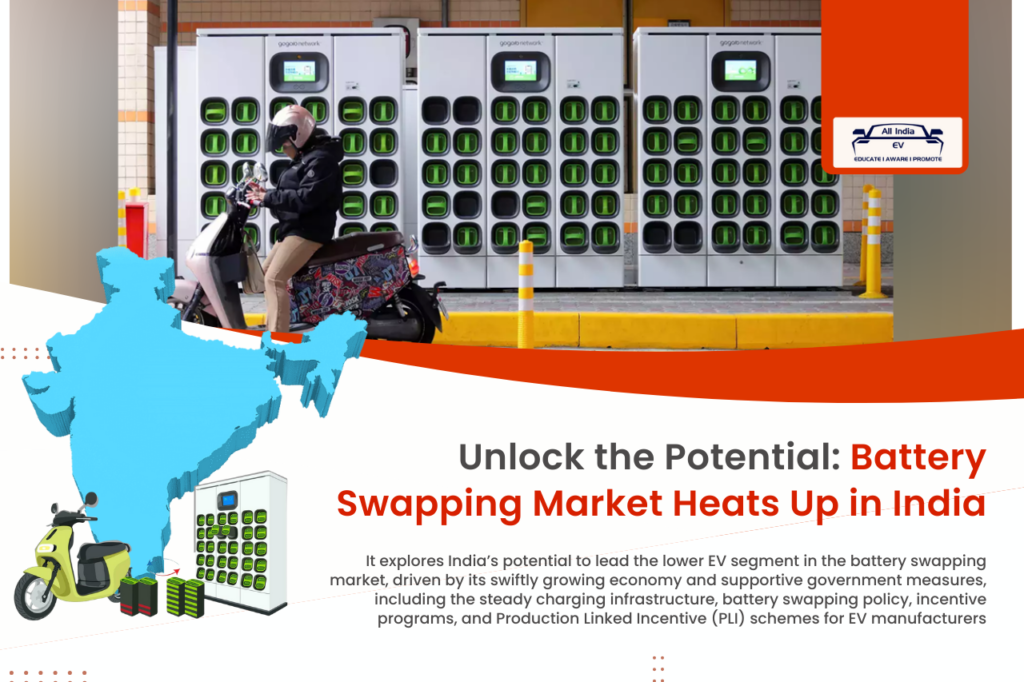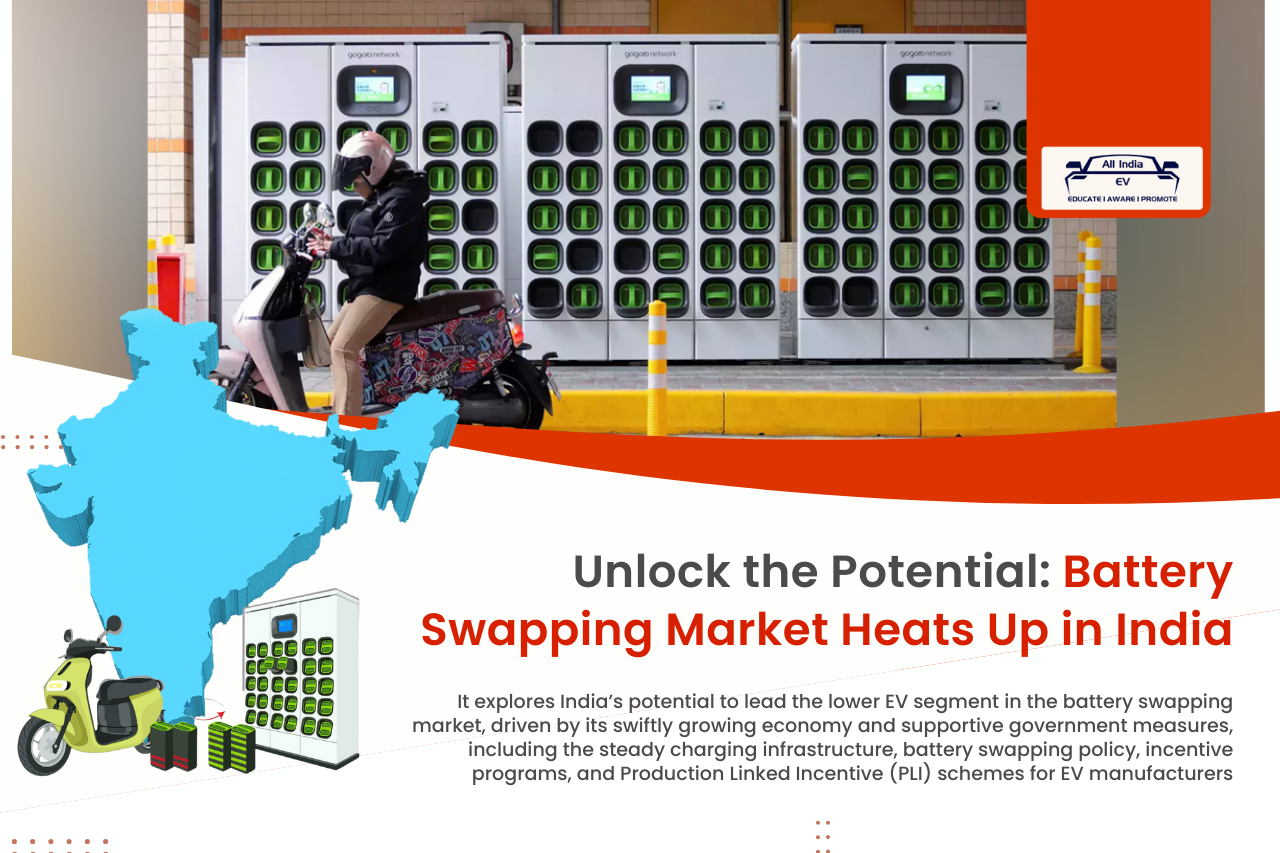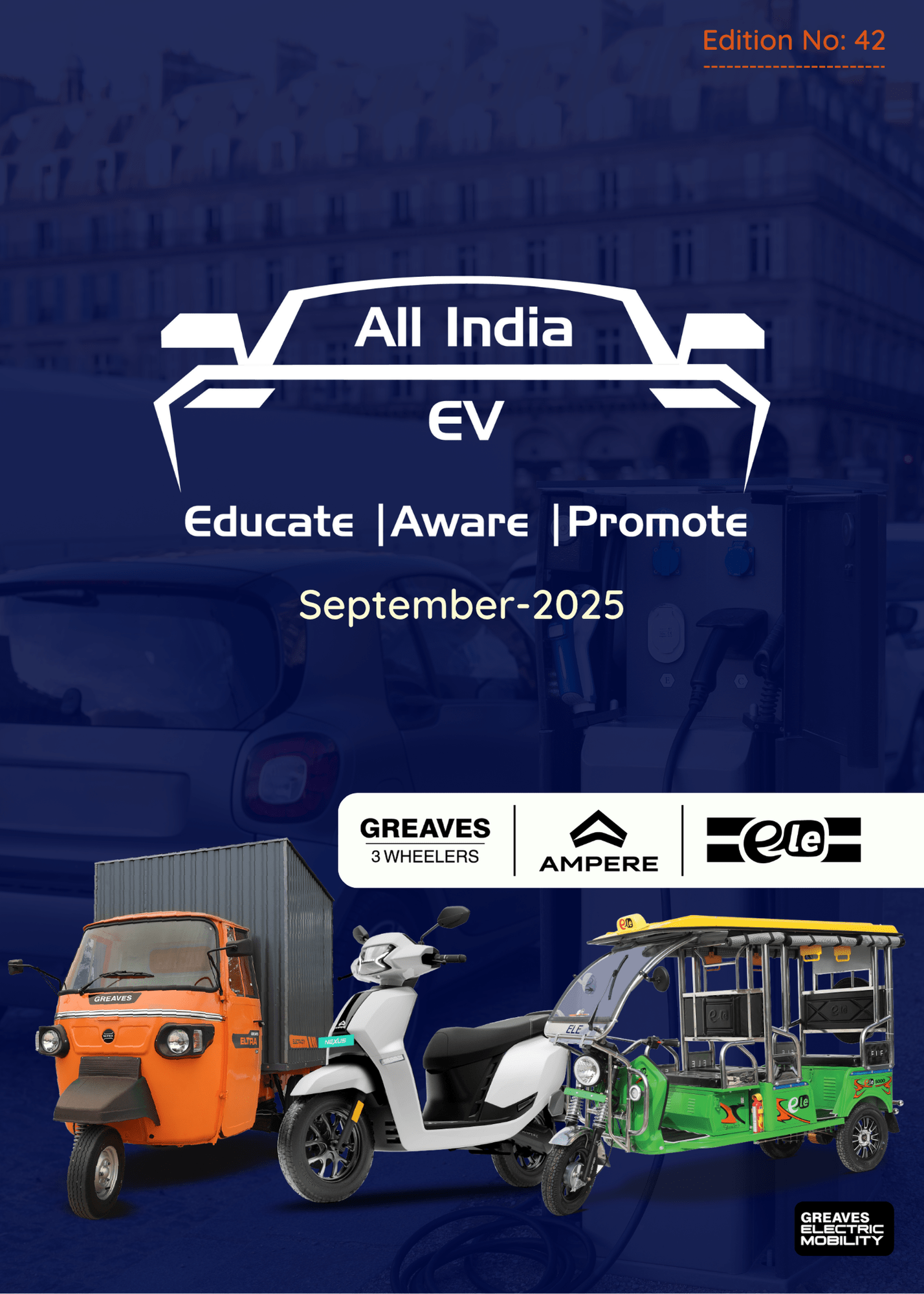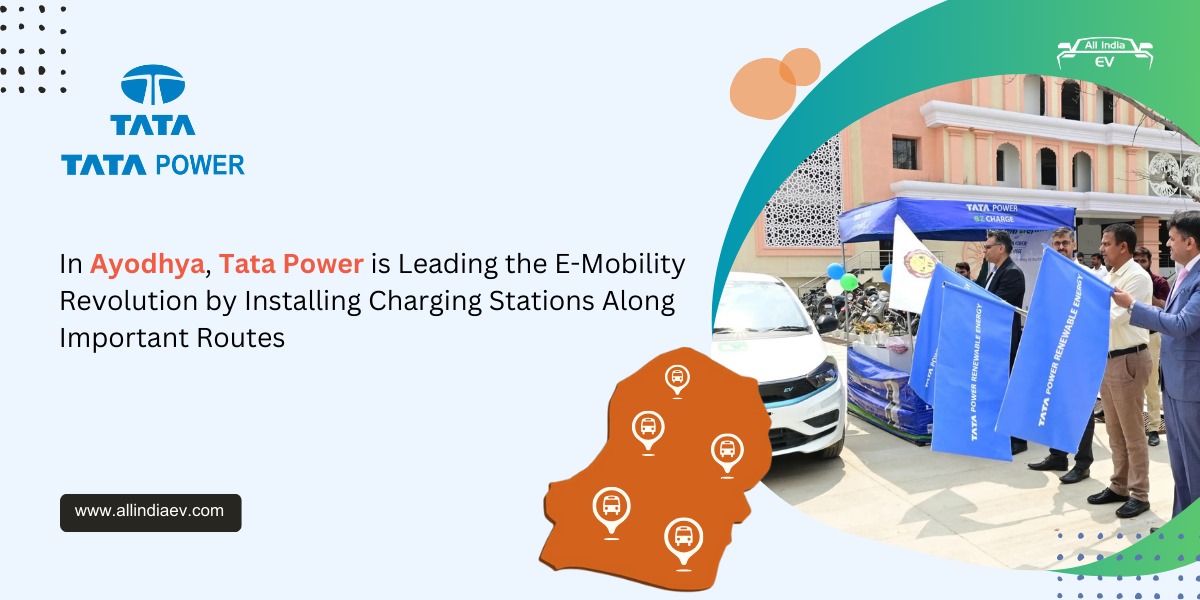
India’s Battery Swapping Market Heats Up Amid Growing EV Push
- 🔋 What is Battery Swapping?
- 🇮🇳 India’s Strategic Advantage in the Swapping Space
- 🏗️ Building a Robust Swapping Network
- ⚙️ Policy Push: The Draft Battery Swapping Policy
- 🌍 Global Trends: How India Compares
- 💼 Business Models in Play
- 🚧 Challenges to Scale
- 🌟 Benefits That Can’t Be Ignored
- 🤝 Key Opportunities Ahead
- 🏁 The Road to 2030
- 📰 Final Word by India EV
India’s electric vehicle (EV) journey is no longer just about adoption—it’s about transformation. With the country now standing as the world’s fourth-largest automotive market, overtaking Germany, India has emerged as a serious contender in the global EV landscape. One segment where India can truly lead the charge is battery swapping—a rapidly growing solution to some of the toughest challenges in EV adoption, especially for the country’s massive lower-EV segment, comprising two-wheelers (E2Ws) and three-wheelers (E3Ws).
In this in-depth analysis, India EV explores the evolving landscape of battery swapping in India—from government policies to business opportunities, from market dynamics to global trends, and from operational benefits to the challenges that still lie ahead.
🔋 What is Battery Swapping?
Battery swapping allows EV users to exchange their depleted batteries for fully charged ones at designated swapping stations. It reduces charging time to under 5 minutes, eliminates range anxiety, and decouples battery ownership from vehicle ownership—thereby lowering upfront EV costs. This “Battery-as-a-Service” (BaaS) model makes EVs more affordable and convenient, especially for last-mile operators and delivery services.
🇮🇳 India’s Strategic Advantage in the Swapping Space
India’s rapidly growing economy, vast e-commerce sector, high urban density, and supportive policy framework create the perfect storm for battery swapping growth. The Indian EV sector, especially the E2W and E3W segments, is growing exponentially. According to a 2023 NITI Aayog report, over 30% of new vehicles sold in India by 2030 are expected to be electric. To support this, over 50,000 fast chargers and 10 lakh home charging stations will be needed.
This infrastructure need opens a massive opportunity for battery swapping stations (BSS) to bridge the charging gap, particularly in urban and semi-urban areas.
🏗️ Building a Robust Swapping Network
Several Indian startups and operators are already capitalizing on this opportunity. Players like Sun Mobility, Battery Smart, VoltUp, Yuma, Gogoro, Chargeup, and Race Energy are leading the charge with active operations across the country. Over 1,640 swapping stations were operational by FY 2022-23, and over 8 crore swaps had been completed—amounting to a revenue of ₹90 crore, according to IESA and JMK Research.
The government projects over 10,000 swapping stations will be operational by 2028, generating an estimated ₹500 crore market.
⚙️ Policy Push: The Draft Battery Swapping Policy
The Indian government has recognized battery swapping as a critical piece of its EV strategy. The Battery Swapping Policy (Draft), launched in 2022, outlines a framework that includes:
- Tax rationalization for swappable batteries (18%) and EV supply equipment (EVSE at 5%)
- Inclusion of swappable battery EVs in existing demand-side incentive programs
- Prioritizing metro cities (population >4 million) for initial rollout
- Mandatory interoperability: each BSS must serve at least two EV OEMs
- Incentivizing use of public spaces like fuel stations, malls, and parking lots for swapping stations
- Mandating concessional electricity tariffs and single-window clearance systems
- Recycling and re-use guidelines for end-of-life batteries
The policy aims to de-risk investments, encourage private sector participation, and foster innovation in business models.
🌍 Global Trends: How India Compares
India isn’t alone in betting big on battery swapping. China leads the global market and has committed to building over 500 heavy vehicle swapping stations by 2025, targeting buses and trucks. Other Asian nations like Vietnam, Indonesia, Japan, South Korea, and Thailand are also rolling out pilots and incentives.
As per JMK Research, the global battery swapping market stood at ₹0.14 lakh crore in 2023 and is expected to grow to ₹3.8 lakh crore by 2030.
While developed countries still rely heavily on plug-in charging due to higher four-wheeler penetration, Asian nations—with their dominance in two- and three-wheeler segments—are ideal battlegrounds for battery swapping.
💼 Business Models in Play
Battery swapping in India is being driven by two major business models:
- Pay-Per-Use – Users pay each time they swap. It offers flexibility but suffers from inconsistent access due to limited infrastructure and OEM compatibility issues.
- Subscription Model – Users pay a fixed monthly fee for unlimited swaps. This model is gaining popularity, especially among B2B logistics and fleet operators. JMK notes a 34% growth in subscription-based models due to their affordability and convenience.
🚧 Challenges to Scale
Despite the momentum, the battery swapping sector faces significant challenges:
🏗️ Capital Investment
Setting up a single swapping station involves:
- 20% cost in land & infrastructure
- 60% in high-tech machinery & battery packs
- 20% in connection infrastructure
High land leasing costs, particularly in metros (₹150/sq. ft. in Delhi), and reliance on Chinese/Taiwanese suppliers for battery technology drive up costs. Battery pack prices range from ₹5,000/kW to ₹14,000/kWh.
🔍 Standardization
There’s currently no standardized battery size or interface across OEMs, limiting interoperability. This monopolistic behavior by manufacturers affects platform sharing and reduces the addressable market per station.
🔌 Infrastructure Gaps
With over 90% of E2Ws and 70% of E3Ws relying on home or office charging, swapping stations often have underutilized capacity due to low footfall and brand-specific operations.
⚠️ Quality & Safety
Without robust government certification frameworks, safety risks around battery quality, fire hazards, and thermal issues remain a key concern.
🌟 Benefits That Can’t Be Ignored
When done right, battery swapping offers several undeniable benefits for India:
- Speed: Swap in 2-10 minutes vs. 5-8 hours for conventional charging
- Cost Reduction: Up to 40% lower total cost for E2W and 35% for E3W owners
- Space Saving: Compact infrastructure makes swapping ideal for urban India
- Lower Downtime: Essential for logistics & e-commerce players
- Flexible Ownership: Users don’t need to worry about battery maintenance or degradation
🤝 Key Opportunities Ahead
As the market matures, here are strategic levers for growth:
- Cross-OEM Compatibility: Developing universal battery standards
- Government Collaboration: Tie-ups with municipalities, DISCOMs, and state bodies
- Retail Integration: Use idle spaces like malls, fuel stations, and public parking
- Franchise Models: Partnering with local entrepreneurs to scale reach
- Digital Payments & IoT: For real-time monitoring and seamless user experience
🏁 The Road to 2030
With India targeting 30% EV penetration by 2030, battery swapping has the potential to become a cornerstone of the nation’s electric mobility ecosystem—particularly for the fast-growing last-mile delivery sector.
The vision for the next 5 years includes:
- 10,000+ swapping stations across metro and tier-II cities
- Increased private investments with favorable policies
- Inclusion of e-buses and commercial EVs into swapping networks
- Standardized certification frameworks for safety and quality
- Broader adoption of the BaaS model in both B2B and B2C segments
📰 Final Word by India EV
Battery swapping is no longer a fringe innovation—it’s a necessity for India’s EV dream to become a sustainable, scalable reality. The nation stands at the cusp of a green revolution, and the time is ripe for policymakers, startups, investors, and OEMs to come together and build a resilient, interoperable, and future-ready battery swapping network.India has the talent, market size, government support, and entrepreneurial drive to lead the world in battery swapping, we believe that leadership is not just possible, it’s inevitable.










